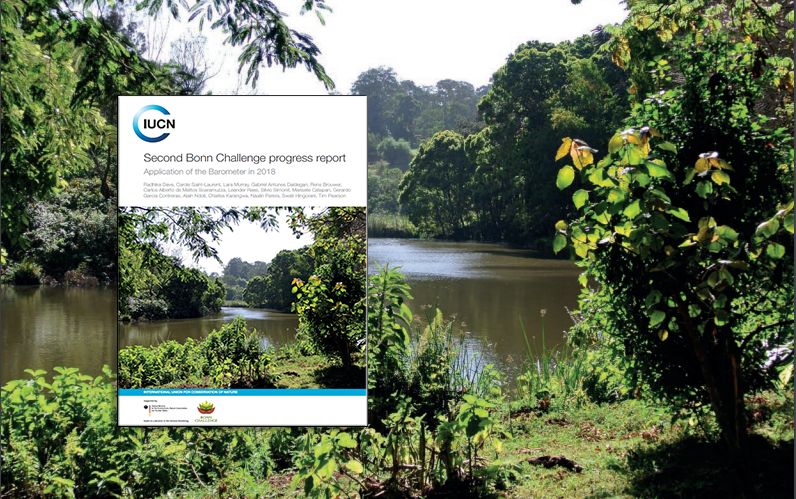Report captures achievement of U.S. Bonn Challenge pledge: restoration progress from 19 countries
28 June 2019, IUCN released its second assessment of the implementation of restoration pledges made to the Bonn Challenge, showing that countries are making impressive progress on the global goal of bringing 150 million hectares into restoration by 2020 and 350 million hectares by 2030.

Photo: IUCN
The Barometer – a Bonn Challenge progress tracking protocol developed by IUCN to determine areas under restoration and the benefits generated for biodiversity, climate and people – was applied in five countries in 2018. An additional 14 countries underwent a ‘rapid application’ of the protocol.
The results are remarkable – the United States has not only achieved but exceeded its pledge to bring 15 million hectares into restoration by 2020, reaching 17 million hectares as of June 2019. Overall, the five countries assessed in depth – Brazil, El Salvador, Rwanda, Mexico and the U.S. – had made commitments totalling 30.7 million hectares with 89% (27.385 million hectares) under restoration. In total, 354,000 long and short-term jobs were created through forest landscape restoration (FLR) programmes.
Speaking about the U.S. pledge, Shira Yoffe, Senior Policy Advisor, U.S. Forest Service said, “To effectively address the risks to our forests we need to expand work to even larger scales and create shared priorities for restoration across ownership boundaries. The Barometer was a catalyst for us to take a more robust look at our restoration reporting, helping us identify strengths and weaknesses in our approach.”
The 14 countries that applied part of the protocol included India, Uganda, Malawi, Kenya, Burundi, Cote d’Ivoire, the Democratic Republic of the Congo, Mozambique, Cameroon, Ghana, Costa Rica, Guatemala, Sri Lanka, and Colombia.
The Barometer captures progress across two sets of indicators – 'success factors' including the policies, institutional frameworks, financial flows and technical support that create an enabling environment for FLR and the 'results and benefits' in terms of the land area brought into restoration and the resultant climate mitigation, biodiversity conservation and job creation benefits. For example, the assessment in El Salvador revealed that 17% of national restoration initiatives are underway in protected areas, with direct benefits to biodiversity.
Lina Pohl, Environment Minister, El Salvador said, “In March 2019, I had the distinct honour of announcing the UN Decade on Ecosystem Restoration 2021–2030. It was a proposal my government first floated to the international community at a Bonn Challenge High-Level Roundtable in 2018. Watching 70+ countries endorse the Decade reminded me of how far we have come in our restoration journey and how far we have yet to go. This is one of the reasons why I am delighted to launch the second report of the Bonn Challenge Barometer as it is a tool that will be vital in helping to assess the progress of the UN Decade as it moves towards implementation.”
Emphasising the importance of the Barometer, IUCN Senior Programme Officer, Radhika Dave shared, “The Barometer fills a key gap on reporting on progress against commitments and has brought countries to the table to openly share data and information on their efforts, flag implementation hurdles and identify ways forward to achieve their targets.”
The report is available here.
IUCN is currently working intensively with the governments of Armenia, Georgia, Uzbekistan, Ethiopia, Madagascar and Togo to apply the protocol to their restoration programmes as well. Data from the Barometer will also contribute to the next report on the New York Declaration on Forests.
♦♦ The Barometer has now been developed as an online tool as well ♦♦



